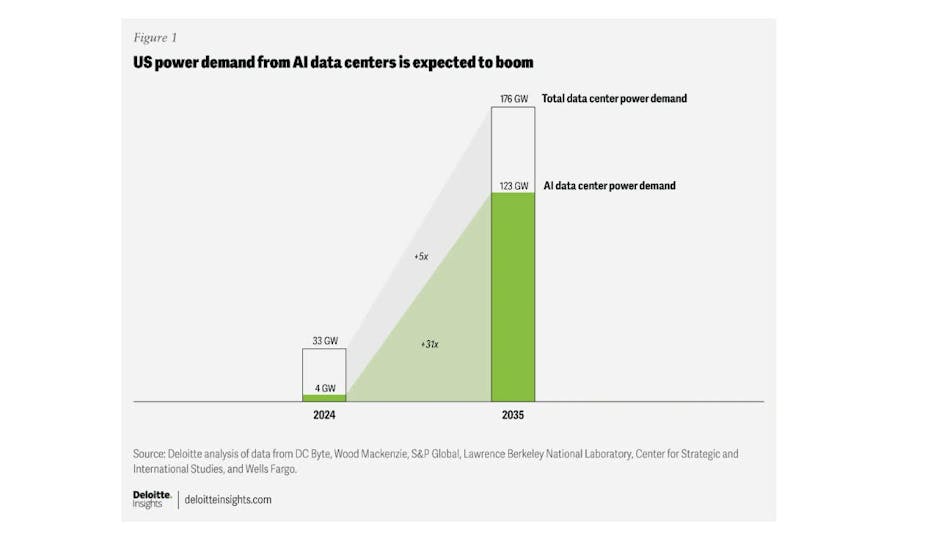
The demand for energy is booming across the nation and Oklahoma’s recent announcements of data centers is just an example of what is happening in the electrical-power generation industry.
Some data center projects are also including their own power supply projects, such as the recently-announced project in Chickasha where the developer intends to build a power plant.
As the demand grows, we can expect more fights, whether it be from solar farms taking up farmland to wind farms and turbine setbacks to former coal plants being converted to natural gas. The opposition will come with the growth of renewable energy projects as well as the need for massive transmission line projects, such as we witnessed early this year in northern Oklahoma.
The advent of the AI or data centers is spreading across the Midwest and southeast.

A recent Deloitte survey confirmed what we’ve expressed in the past several weeks. It found that AI data center power demand is expected to grow more than thirtyfold in the next ten years. Going from 4 GW last year to 123 GW by 2035. AI accounted for 12% of the 33 GW in data center power demand last year but it is expected to balloon to 70% of the 176 GW in data center power demand expected by 2035, as reported by T&D World.
Just take a look at the headlines of what is happening across the country.
Colorado conservationists push back on Xcel Energy’s proposed 307 MW natural gas plant at the site of a retiring coal facility, saying battery energy storage would be cheaper and cleaner.
Idaho Power proposes to meet projected demand growth by adding more than 3,000 MW of solar, wind, and battery storage, converting coal plants to gas, and increasing efficiency and demand response.
Recurrent Energy brings its 1,200 MWh Papago battery energy storage system online in central Arizona.
Wisconsin advocates expect electricity prices to rise and clean energy and EV progress to stall under the new federal tax and spending bill President Trump signed into law Friday.
A data center builder says the northern Plains could be a hub for construction activity as the region’s cold climate and power access could save companies billions.

